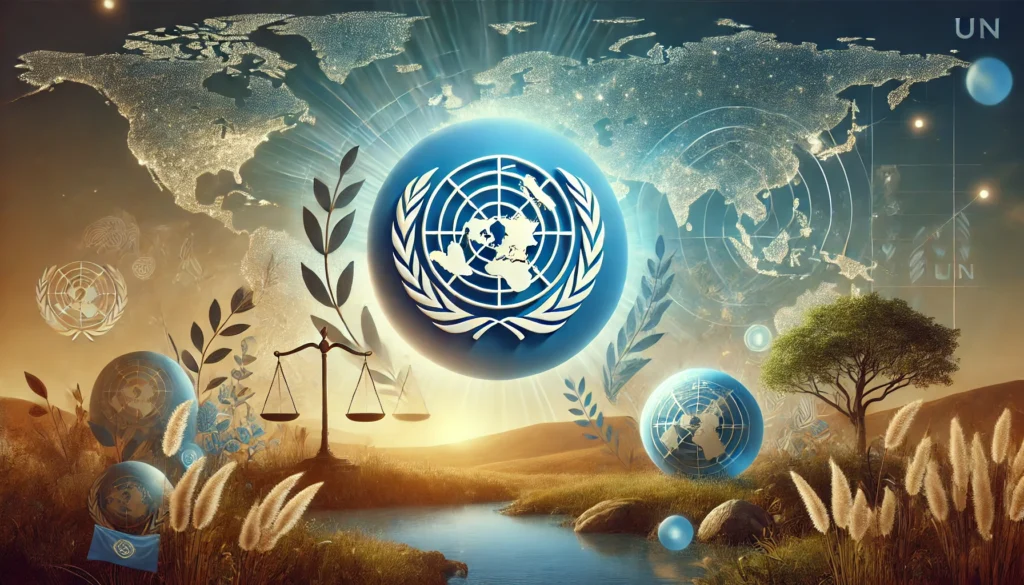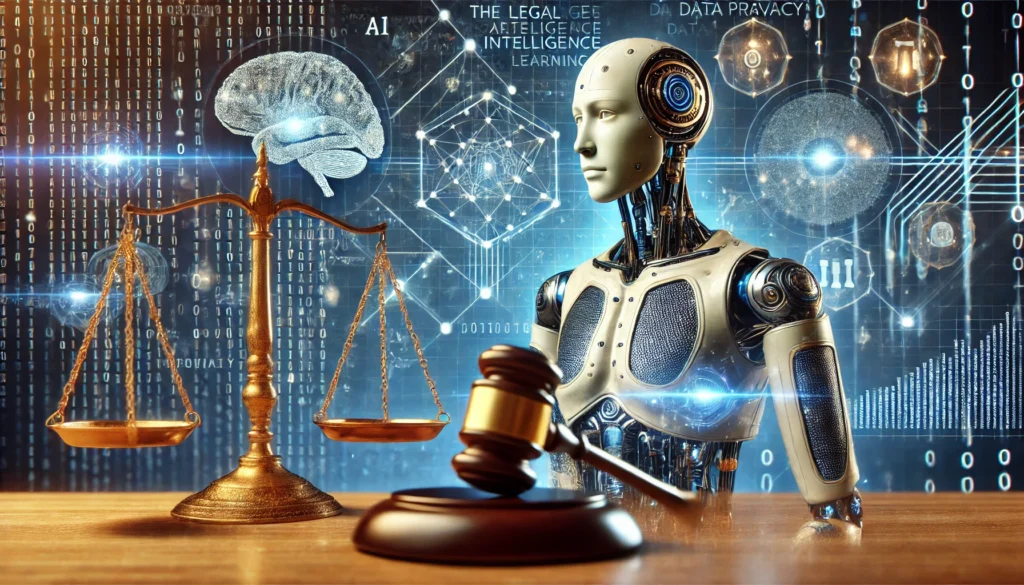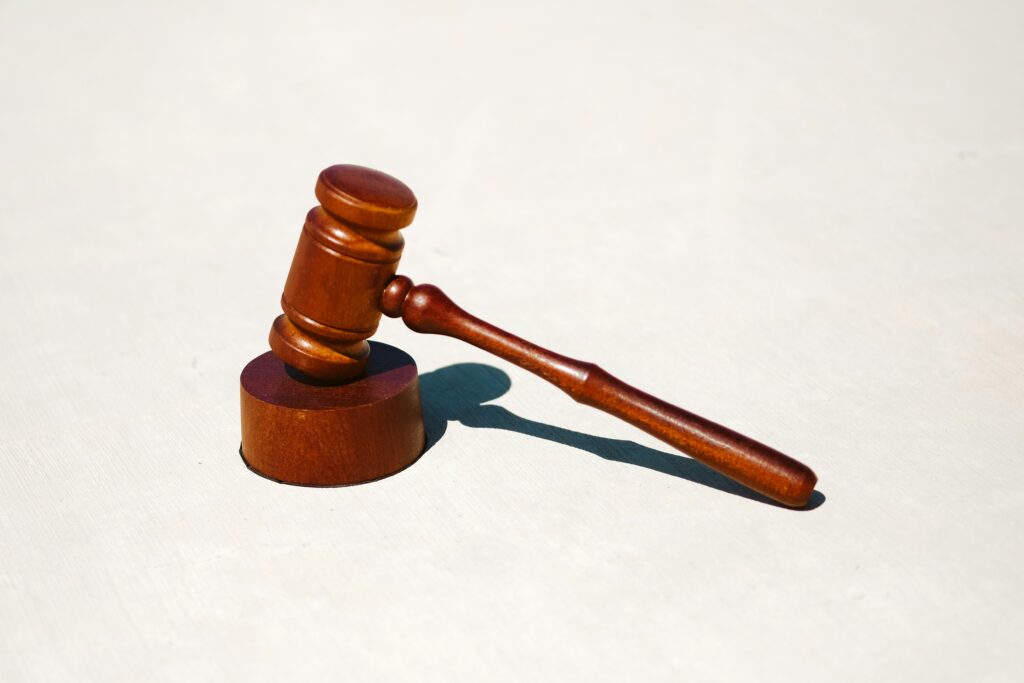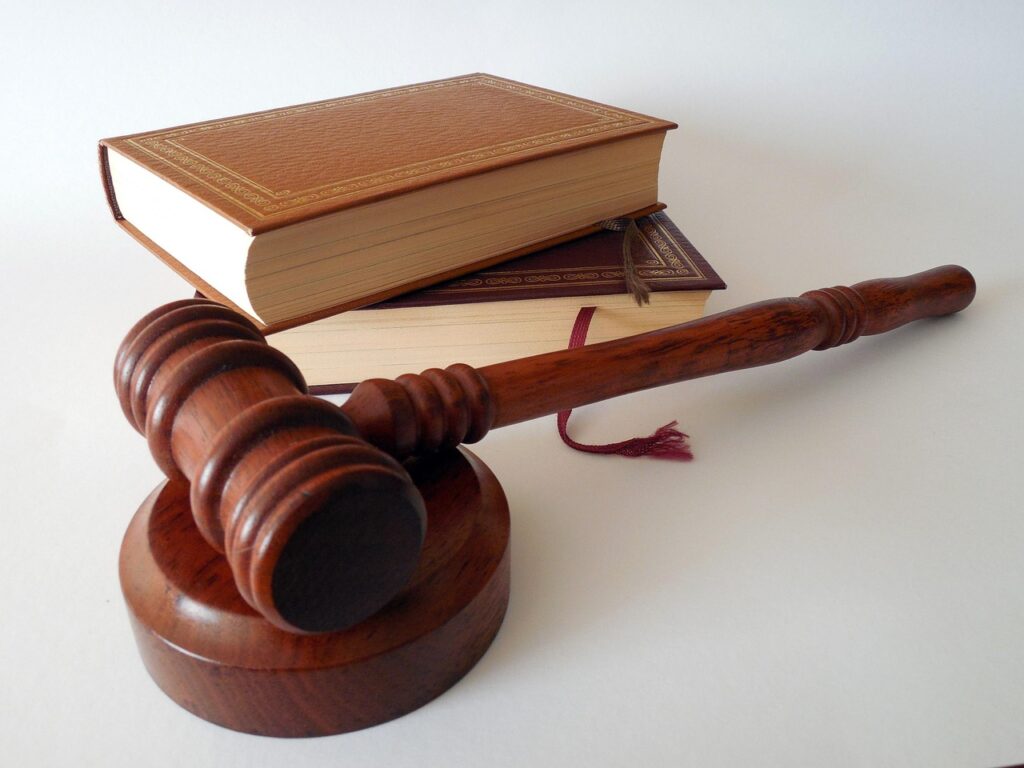Published On: October 13th 2025
Authored By: Kanaklata Singh
Hemvati Nandan Bahuguna Garhwal University,
SRT Campus Uttarakhand
“Copyright in the digital age is not just about law; it is about the way a society chooses to value creativity, innovation, and access to knowledge.” – Lawrence Lessig
ABSTRACT
The digital era has revolutionized the creation and distribution of copyrighted works, while simultaneously intensifying challenges of piracy, anonymity, and cross-border enforcement. India’s framework under the Copyright Act, 1957 and the Information Technology Act, 2000 provides civil, criminal, and technological remedies, yet evolving digital threats demand stronger reforms. This paper examines judicial innovations such as dynamic injunctions, explores enforcement hurdles including VPNs, mirror sites, and jurisdictional barriers, and highlights the tension between copyright enforcement and freedom of expression. It proposes reforms through international cooperation, AI-driven monitoring, enhanced intermediary accountability, fair use expansion, and the creation of small claims tribunals. By integrating global best practices while safeguarding constitutional rights, India can develop a copyright regime that is both robust and balanced.
INTRODUCTION
Copyright is a form of intellectual property that grants authors exclusive rights over their creative works, including literary, artistic, musical, dramatic pieces, cinematograph films, and sound recordings. These rights allow creators to control reproduction, distribution, communication, and adaptation of their works[1]. The law aims to protect both the moral and economic interests of authors while encouraging innovation and the wider circulation of knowledge by ensuring that creators receive due recognition and reward.
However, the digital age has complicated these objectives. The rapid growth of technology has transformed how works are produced, stored, and consumed, while also making unauthorized copying and online distribution easier than ever before. This has resulted in a sharp increase in copyright infringement. Social media platforms like YouTube, Instagram, and TikTok highlight this paradox: they enable creators to reach global audiences but also facilitate unauthorized use of protected works. For example, in 2024, the Bollywood track Srivalli from Pushpa was repeatedly reproduced in short-form videos without licensing, raising concerns about fair artist compensation. Similarly, generative artificial intelligence has raised new questions of ownership and originality, as seen in the viral “fake Drake” song of 2023, which imitated the singer’s voice and blurred the line between authentic and derivative works[2].This article examines copyright infringement in the digital era, focusing on India’s Copyright Act, 1957 and its interplay with the Information Technology Act, 2000. It also draws global comparisons, analyzes judicial trends, enforcement challenges, and explores reforms needed to balance creator protection with public access to culture and knowledge.
LEGAL FRAMEWORK FOR COPYRIGHT IN INDIA
The Copyright Act, 1957 is India’s primary copyright legislation, safeguarding literary, artistic, musical, dramatic works, films, and sound recordings. Section 14 grants creators exclusive rights to reproduce, distribute, perform, communicate, and adapt their works. These rights serve dual purposes: economic, allowing authors to monetise their creations, and moral, ensuring recognition, attribution, and protection of the creator’s integrity[3].
The Copyright (Amendment) Act, 2012 was a landmark reform that modernized Indian copyright law to address challenges of the digital era and align it with global standards[4]. A key aspect of the amendment was the introduction of Section 65A on technological protection measures (TPMs) and Section 65B on rights management information (RMI), which prohibit the circumvention of digital rights management (DRM) systems and the alteration of ownership or licensing information. These provisions play a crucial role in protecting films, music, and digital content against unauthorized copying and distribution. Their practical relevance has become evident in recent years; for instance, in 2023, leading OTT platforms like Netflix India and Disney+ Hotstar invoked these sections to tackle rampant piracy involving unauthorized screen recordings and redistribution of premium content on Telegram channels. Complementing the Copyright Act, the Information Technology Act, 2000 addresses enforcement, particularly through intermediary liability. Section 79 of the IT Act grants conditional “safe harbour” to intermediaries such as ISPs and social media platforms[5], shielding them from liability for third-party content provided they act diligently and remove infringing material upon notice. Judicial interpretation has clarified the limits of this immunity: in Super Cassettes Industries Ltd. v. MySpace Inc. (2016), the Delhi High Court held that intermediaries cannot claim blanket protection if they profit from or encourage infringement. More recently, in Shreya Singhal v. Union of India (2015), the Supreme Court emphasized the importance of “actual knowledge” in determining intermediary liability, while in Phonographic Performance Ltd. v. Lookpart Exhibitions (2022),courts reinforced that unauthorized public communication of sound recordings amounts to infringement. In 2024, YouTube India faced scrutiny when rights holders alleged that its monetization algorithms indirectly incentivized infringing uploads.
UNDERSTANDING COPYRIGHT INFRINGEMENT IN THE DIGITAL AGE
Copyright infringement arises when a person, without authorization from the rights holder, engages in acts reserved exclusively for the copyright owner under Section 14 of the Copyright Act, 1957. These exclusive rights include reproduction, distribution, public performance, and communication of a work to the public. In 2024, the Delhi High Court restrained an e-learning platform from circulating PDF copies of a best-selling law textbook, terming it an unlawful reproduction and communication to the public. Adaptations and derivative works also constitute infringement unless duly licensed. For instance, in 2025, a YouTube channel faced legal proceedings for producing animated adaptations of Hindi novels without authorization[6], raising questions about whether such transformative adaptations fall within the scope of fair dealing. Indian jurisprudence, unlike the broader U.S. concept of transformative fair use, has largely taken a conservative approach in such cases[7].
The digital age has expanded the scale of infringement, especially through piracy and unauthorized uploads. In UTV Software Communication Ltd. v. 1337X.to (2019), the Delhi High Court permitted dynamic injunctions to curb “hydra-headed” piracy websites. Despite this, by mid-2024, Animal was illegally downloaded more than 1.5 million times in a single week, underscoring persistent enforcement challenges. Streaming platforms like YouTube and Spotify face recurring disputes, as seen in 2024 when Indian music labels issued mass takedowns of unlicensed uploads monetized through ad revenues. Cases such as Super Cassettes v. MySpace (2016) have further clarified that intermediaries cannot escape liability when they commercially benefit from infringing content.
The rise of generative AI presents unprecedented challenges. In 2023, an AI-generated track mimicking Drake and The Weeknd triggered global debate on originality and infringement. In India, AI-generated Bollywood songs and devotional tracks circulate widely without licensing, yet the Copyright Office remains inconsistent, first recognizing and later rejecting AI authorship. Internationally, the U.S. Copyright Office has ruled that purely AI-generated works are uncopyrightable, while the UK explores reforms on AI training data. These debates reveal that questions of authorship, liability, and originality in the AI era remain unresolved, demanding urgent legal clarity.
KEY INDIAN CASE LAWS ON DIGITAL COPYRIGHT ISSUES
The trajectory of Indian copyright jurisprudence in the digital age reveals a progressive tightening of judicial oversight over intermediaries, platforms, and piracy networks. One of the earliest significant rulings was in Super Cassettes Industries Ltd. v. MySpace Inc. (2011)[8], where the Delhi High Court addressed the liability of an online social networking and entertainment platform that hosted user-uploaded infringing content. The Court held that intermediaries cannot claim blanket immunity under Section 79 of the Information Technology Act, 2000 when they actively curate or monetize infringing works for commercial gain. This decision marked an early shift towards holding intermediaries accountable, setting the tone for later jurisprudence on intermediary responsibility in India’s digital landscape.
A subsequent milestone came in Tips Industries Ltd. v. Wynk Music Ltd. (2019)[9], where the Bombay High Court clarified that statutory licensing under Section 31D of the Copyright Act, 1957 applied only to radio broadcasting and not to on-demand streaming services. The ruling forced platforms like Wynk Music to negotiate directly with rights holders, thereby reshaping the licensing framework for India’s growing digital music industry. In the same year, the Delhi High Court in UTV Software Communication Ltd. v. 1337X.to & Ors.[10] recognized the “hydra-headed” nature of online piracy and introduced the doctrine of dynamic Ors. recognized the “hydra-headed” nature of online piracy and introduced the doctrine of dynamic injunctions, empowering rights holders to block not just identified infringing domains but also future mirror and proxy sites without filing fresh litigation. This innovation represented a significant leap in judicial efforts to combat digital piracy, as it acknowledged the adaptability of infringing networks and the need for courts to adopt equally flexible remedies.
Building on this precedent, in 2023, the Delhi High Court in Yash Raj Films Pvt. Ltd. v. X Telegram Channel Admins applied dynamic injunctions against piracy on encrypted messaging platforms, ordering the blocking of Telegram channels that were distributing full-length pirated copies of Pathaan within days of its theatrical release[11]. The Court emphasized that piracy on closed-network platforms could cause as much damage as traditional torrent websites, necessitating swift and technology-driven remedies. Most recently, in Red Chillies Entertainment v. Various Pirate Domains (2024), the Delhi High Court granted expedited dynamic injunctions within 48 hours of the release of Jawan[12], demonstrating judicial recognition of the urgent need to protect box-office revenues in the first days of a film’s release. From Super Cassettes in 2011 to Jawan in 2024, Indian courts have steadily expanded the scope of copyright enforcement transitioning from questions of intermediary liability, through licensing complexities in the streaming era, to rapid and adaptive remedies against piracy. This evolution highlights the judiciary’s attempt to balance the protection of creators’ rights with the risk of overblocking and the need to preserve legitimate access to digital content.
REMEDIES FOR COPYRIGHT INFRINGEMENT
The Copyright Act, 1957 and IT Act, 2000 offer civil, criminal, and technological remedies, with courts adapting them against digital piracy[13].
A. Civil Remedies
Civil remedies form the first line of protection under the Copyright Act, 1957. Injunctions are the most common, with courts granting interim or permanent orders under Section 55 to restrain infringement. In UTV Software Communication Ltd. v. 1337X.to[14], the Delhi High Court introduced dynamic injunctions, allowing extension to new domains without fresh suits. This proved critical in 2024, when mirror sites pirating Jawan were blocked within 48 hours of its release. Courts also award damages, both actual and statutory, as seen in Super Cassettes Industries Ltd. v. Hamar Television Network Pvt. Ltd.,[15] where ₹3.5 million in punitive damages was ordered. Additionally, the equitable remedy of accounts of profits ensures infringers surrender unlawful gains, a principle extended from trademark cases like Hindustan Pencil Ltd. v. India Stationery Products Co. to copyright disputes[16].
B. Criminal Remedies
The Act also prescribes criminal sanctions. Sections 63 and 63A impose imprisonment of six months to three years and fines between ₹50,000 and ₹2,00,000 for willful infringement. In 2023, Hyderabad police arrested members of a piracy racket distributing Pathaan via Telegram under these provisions. Section 64 further empowers police to seize infringing copies without a warrant[17], a tool used in raids on presses printing pirated textbooks and in digital seizures of servers hosting unauthorized films. These remedies underline that piracy is treated not just as a private wrong but as a public offence.
C. Technological Measures
With digital media’s growth, technological protection measures have become vital. Sections 65A and 65B safeguard DRM and Rights Management Information. Platforms like Netflix and Amazon Prime employ DRM to block unauthorized downloads, and in 2023, piracy groups bypassing such systems faced prosecution. Alongside, website blocking orders and dynamic injunctions remain central judicial tools, reaffirmed most recently in the Jawan piracy case.
D. Role of Intermediaries
Intermediaries such as ISPs and online platforms are protected under Section 79 of the IT Act, 2000[18], but only if they act swiftly upon notice of infringement. This has shaped India’s notice-and-takedown model, where rights holders alert platforms to infringing material[19]. In 2024, YouTube India removed thousands of infringing music videos within hours of takedown requests, showing how intermediary compliance has become essential to enforcement.
CHALLENGES IN ENFORCEMENT OF COPYRIGHT ACT
Despite strong provisions under the Copyright Act, 1957 and the Information Technology Act, 2000, copyright enforcement in India encounters significant hurdles in the digital era[20]. Cross-border piracy remains a major challenge, as infringing servers are often hosted in foreign jurisdictions with slow or weak enforcement. Even with international frameworks like the Berne Convention and TRIPS Agreement, practical cooperation is limited[21]. For instance, in 2024, Indian production houses faced difficulties acting against a Malaysia-based network streaming cricket matches illegally, as local courts required fresh proceedings[22].
Anonymity further complicates enforcement, particularly with the use of VPNs that mask identities. In UTV Software v. 1337X.to[23], the Delhi High Court introduced John Doe injunctions against unidentified infringers, but VPN-enabled operators continue to evade detection. In 2025, an Eastern Europe–based Telegram channel distributed pirated Bollywood films while concealing its origin. Website blocking, though common, provides temporary relief, as mirror and proxy sites proliferate rapidly. In the Jawan piracy case (2024), over 150 new domains emerged within days despite injunctions[24]. Finally, overbroad enforcement risks restricting legitimate fair dealing uses such as parody or criticism, while high litigation costs and judicial delays make enforcement particularly difficult for small creators and independent artists.Website blocking, though common, provides temporary relief, as mirror and proxy sites proliferate rapidly. In the Jawan piracy case (2024), over 150 new domains emerged within days despite injunctions[25].
RECOMMENDATIONS AND WAY FORWARD
The digital age has transformed how creative works are produced and consumed, requiring India to strengthen its copyright enforcement regime under the Copyright Act, 1957 and the Information Technology Act, 2000. Cross-border piracy remains a persistent challenge, as infringing websites are often hosted overseas[26]. To address this, India should pursue bilateral and multilateral agreements, modeled on the Anti-Counterfeiting Trade Agreement (ACTA), to enable faster cooperation and coordinated enforcement. Dedicated liaison units between Indian agencies and global copyright organizations could further reduce delays in taking down foreign-hosted piracy networks.
Another urgent reform is tackling anonymous infringers, who often exploit Virtual Private Networks (VPNs) and domain registrars to conceal identity. Courts could be empowered to compel ISPs and registrars to disclose subscriber details upon prima facie evidence of infringement. Limited logging obligations on VPN providers for verified law enforcement requests would deter repeat offenders while protecting user privacy. To keep pace with technological challenges, AI-driven “content fingerprinting” systems, similar to YouTube’s Content ID, could be deployed in partnership with ISPs and search engines, enabling quick identification and takedown of mirror or proxy domains.
At the same time, enforcement must balance rights with freedom of expression. A flexible “fair use” model, akin to the U.S., would protect transformative works, parody, and commentary, avoiding overreach in takedown actions. Establishing a copyright small claims tribunal, as seen in the U.S. CASE Act, 2020[27], would reduce litigation costs for smaller creators. Finally, raising public awareness, expanding affordable legal alternatives, and clarifying intermediary obligations under Section 79 of the IT Act would strengthen compliance and ensure a more balanced, modern framework.
CONCLUSION
India stands at a pivotal juncture in digital copyright law. The evolution from early cases like Super Cassettes v. MySpace to more recent dynamic injunction jurisprudence demonstrates the judiciary’s adaptability. Yet, without legislative updates to address anonymity, cross-border enforcement, and technological gaps, rights holders will remain at a disadvantage in the fast-moving digital environment. By integrating lessons from U.S., EU, and other jurisdictions while safeguarding constitutional values India can create a copyright enforcement framework that is both robust and balanced.
REFERENCES
[1] The Copyright Act, No. 14 of 1957
[2] Prashant Reddy T and Sumathi Chandrashekaran, Create, Copy, Disrupt: India’s Intellectual Property Dilemmas (Oxford University Press 2017) 223–225
[3] The Copyright Act, No. 14 of 1957, INDIA CODE (1995)
[4] The Copyright (Amendment) Act, No. 27 of 2012, INDIA CODE (2012)
[5] The Information Technology Act, No. 21 of 2000
[6] Indian Express, YRF Sends Takedown Notices Over Pathaan Clips in Political Ads (Oct. 14, 2023)
[7] Ben Sisario, A.I. Song Imitating Drake and The Weeknd Is Pulled From Streaming, N.Y. TIMES (Apr. 18, 2023)
[8] Super Cassettes Indus. Ltd. v. MySpace Inc., 2011
[9] Tips Indus. Ltd. v. Wynk Music Ltd., 2019
[10] UTV Software Commc’n Ltd. v. 1337X.to, 2019
[11] Bar & Bench, Delhi HC Orders Blocking of Telegram Channels Pirating Pathaan (Feb. 2023), [https://www.barandbench.com/]
[12] Bar & Bench, Delhi HC Grants Dynamic Injunction to Block Jawan Piracy Websites (Sept. 8, 2024), [https://www.barandbench.com/]
[13] The Copyright Act, No. 14 of 1957, INDIA CODE (1995)
[14] UTV Software Commc’n Ltd. v. 1337X.to, 2019
[15] Super Cassettes Indus. Ltd. v. Hamar Television Network Pvt. Ltd., 2011
[16] Bar & Bench, Delhi HC Grants Dynamic Injunction to Block Jawan Piracy Websites (Sept. 8, 2024), [https://www.barandbench.com/]
[17] Hindustan Pencil Ltd. v. India Stationery Prods. Co., 1990
[18] The Information Technology Act, No. 21 of 2000
[19] The Hindu Bureau, Hyderabad Police Bust Telegram Movie Piracy Racket (Feb. 2023), [https://www.thehindu.com/]
[20] Berne Convention for the Protection of Literary and Artistic Works, Sept. 9, 1886, as revised at Paris, July 24, 1971
[21] Economic Times, Indian Broadcasters Struggle to Block Overseas Cricket Piracy (Oct. 2024), [https://economictimes.indiatimes.com/]
[22] Hindustan Times, VPN-Enabled Telegram Piracy Rings Target Bollywood Films (Jan. 2025), [https://www.hindustantimes.com/]
[23] UTV Software Commc’n Ltd. v. 1337X.to, 2019
[24] Indian Express, Comic Fights Copyright Takedown Over Film Clip Usage (Nov. 2023), [https://indianexpress.com/]
[25] Scroll Staff, Indie Artist Wins Copyright Case Against Streaming Platform After Three Years (Mar. 2024), [https://scroll.in/]
[26] Anti-Counterfeiting Trade Agreement (ACTA), opened for signature May 1, 2011
[27] Copyright Alternative in Small-Claims Enforcement (CASE) Act of 2020




